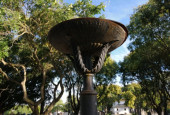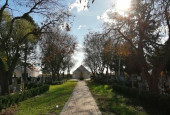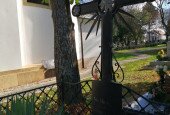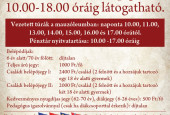Széchényi Mausoleum and Graveyard in Nagycenk
The Nagycenk cemetery is among the most significant Hungarian memorial sites, and it is part of the National Graveyard with the Széchenyi Mausoleum and the Széchenyi Sarcophagus.
Entering the cemetery gate, reading the timeless thoughts of István Széchenyi on the pavement you can get to the central building of the graveyard, the Széchényi Mausoleum. Both the mausoleum and the crypt bear the marks of their construction periods. The oval chapel and tomb, built by Zsuzsanna Barkóczy, was expanded in Classicist style on behalf of Ferenc Széchényi with a foyer built following the example of Greek churches and a crypt with a cross-shaped floor plan. In the mausoleum you can find in particular the earthly remains of Count István Széchenyi, the ashes of Count Ferenc Széchényi and the mummified body of Pál Széchényi, the Archbishop of Kalocsa. Currently 48 descendants of the family rest in the tomb.
Previous examinations identified arsenic on the skin surface of Pál Széchényi's mummified body kept in a glass coffin. The legend that the archbishop was poisoned was based on this. By nowadays it has been proven that the body of the archbishop was preserved with arsenic solution by the Pauline monks of Sopronbánfalva, and the body remained in such good condition due to that.
In 1910 it became necessary to expand the cemetery. In the centre of the new cemetery section, a new family crypt was created under a huge sarcophagus, where the ashes of the Széchényi descendants were placed from the Benedictine (Goat) church in Sopron as well as from the family crypts of the churches in Fertőszéplak and Egervár.
Currently, more than 100 members of the family rest in the cemetery garden.
Opening Hours: Tuesday-Sunday 09:00 AM - 5:00 PM
Ticket Price: 1500 HUF/person
Student/Senior: 750 HUF/person
For ticket prices click HERE!







